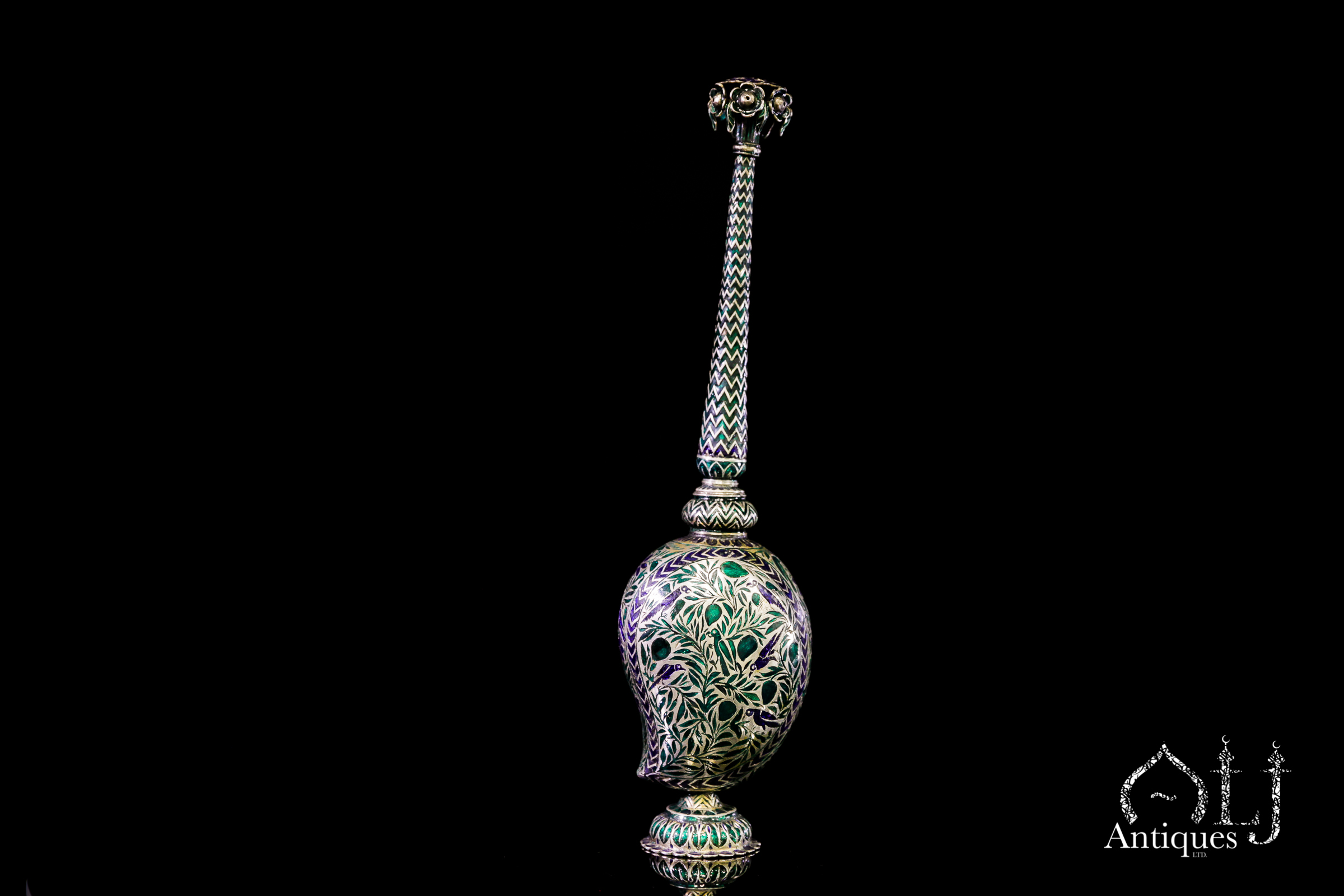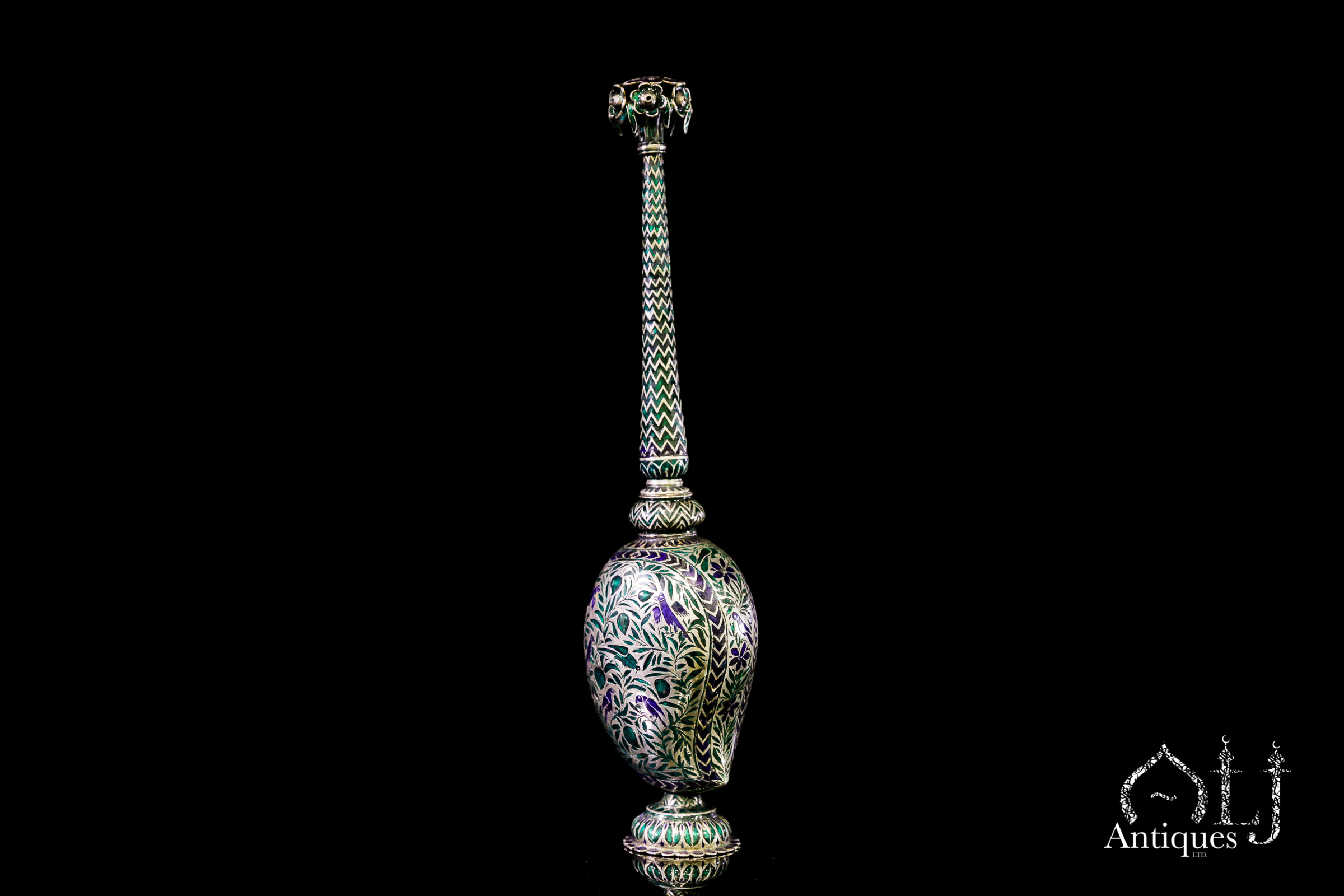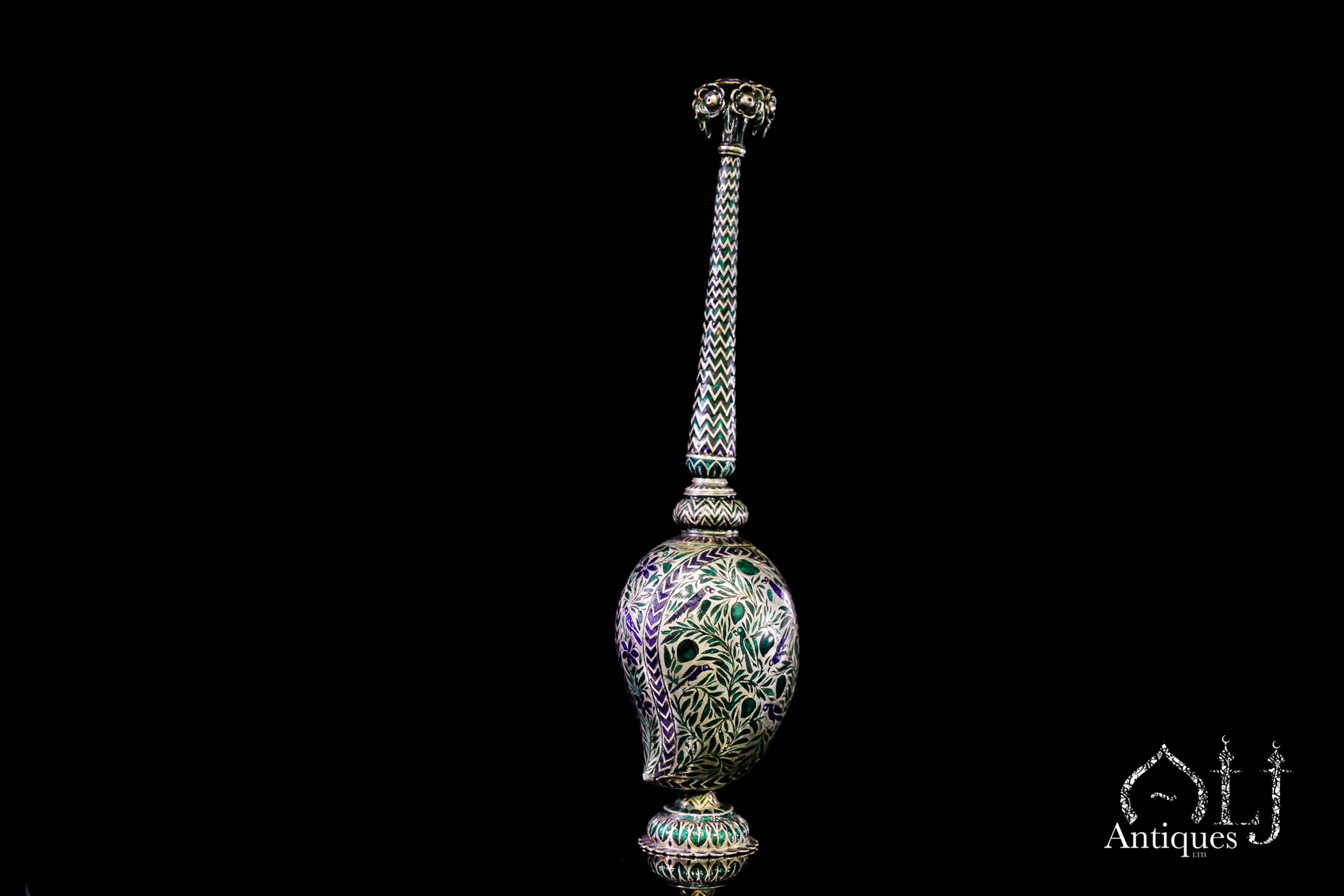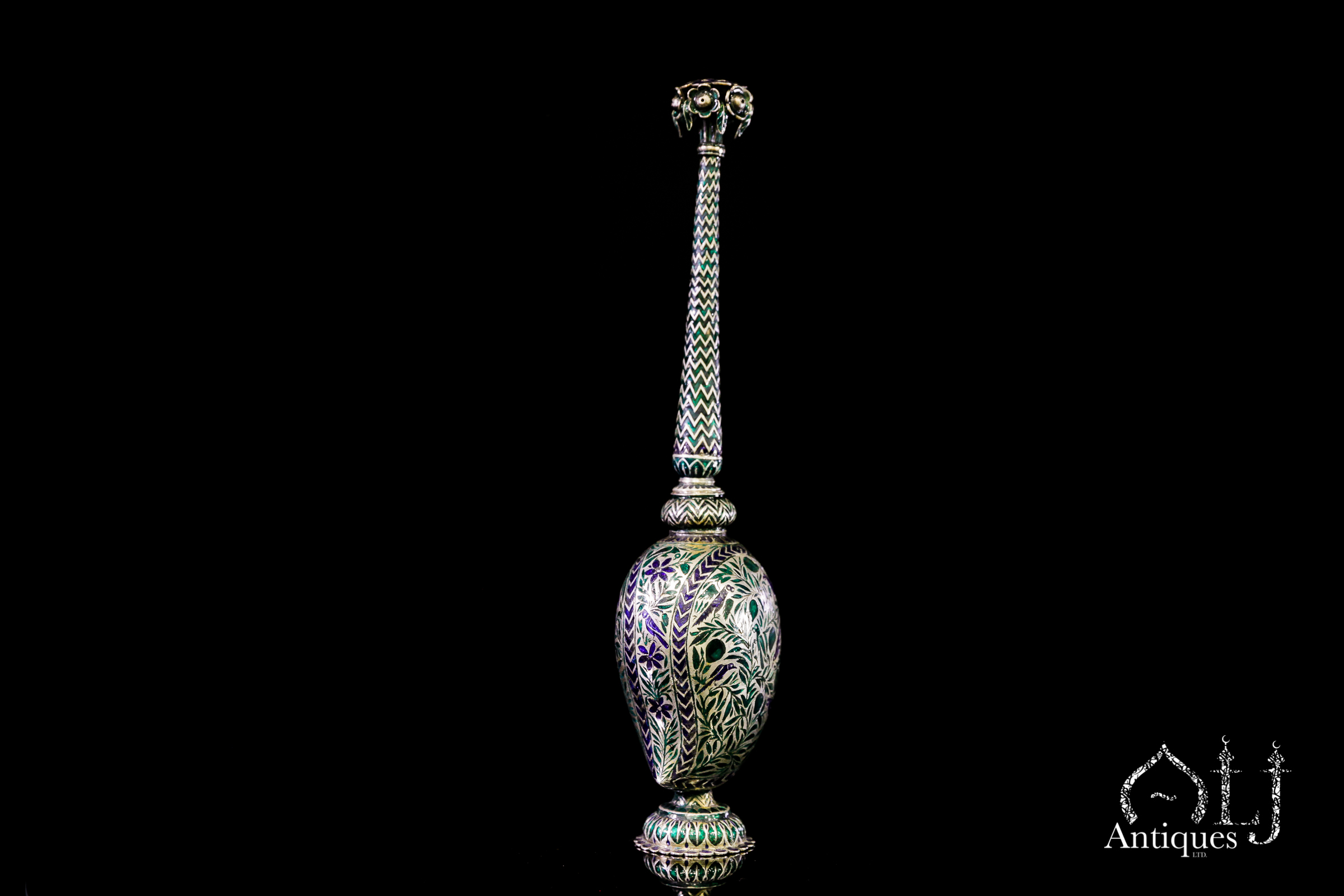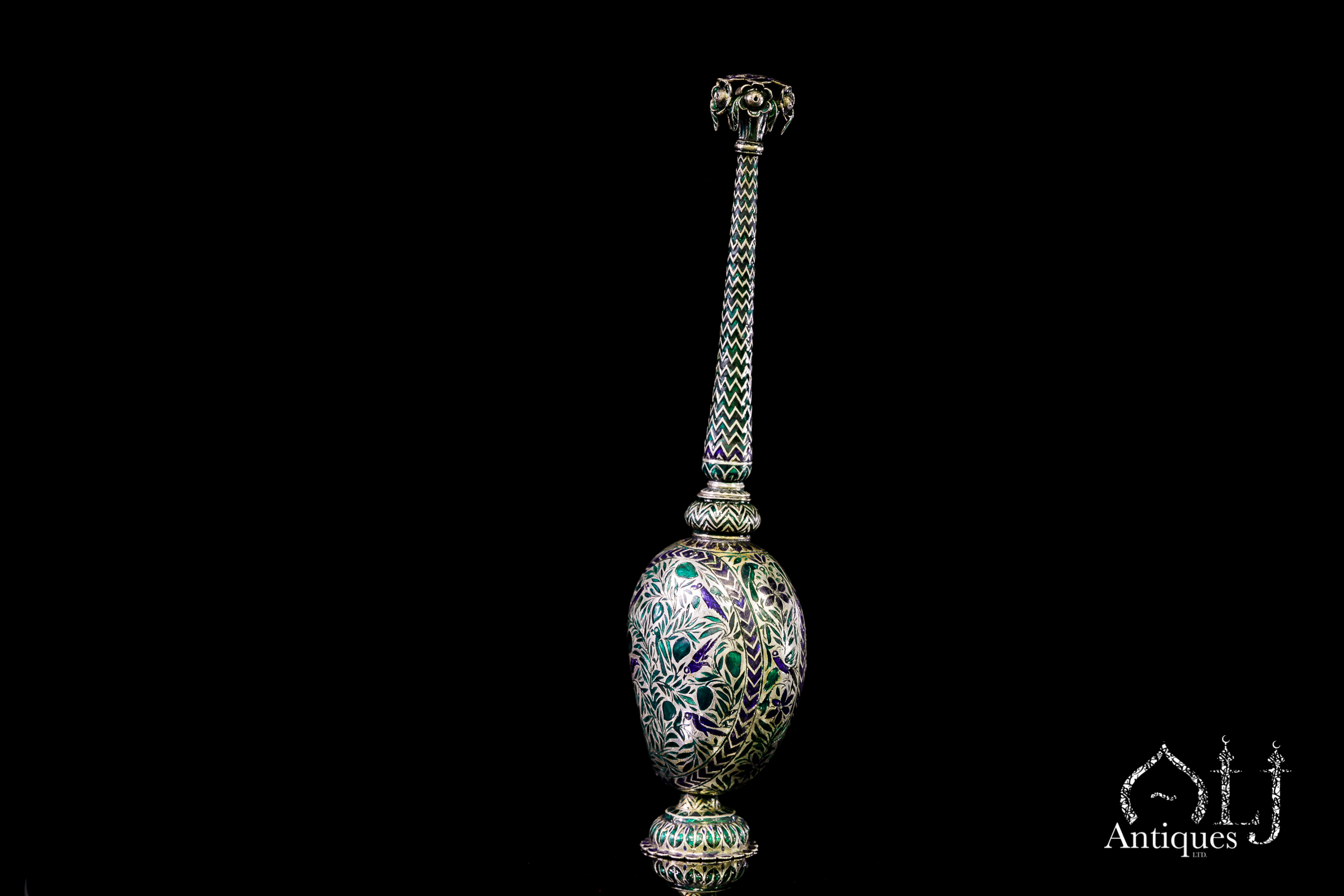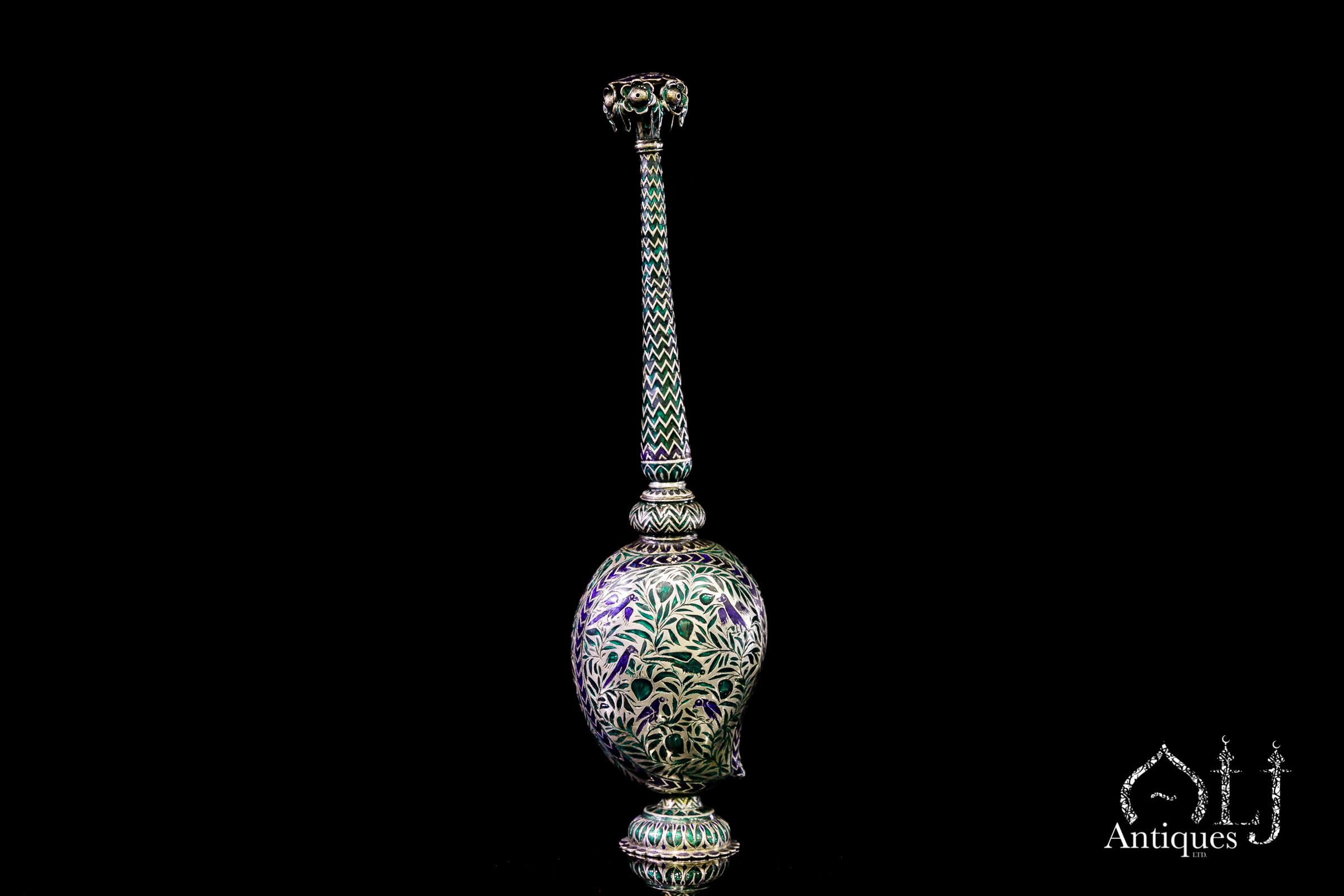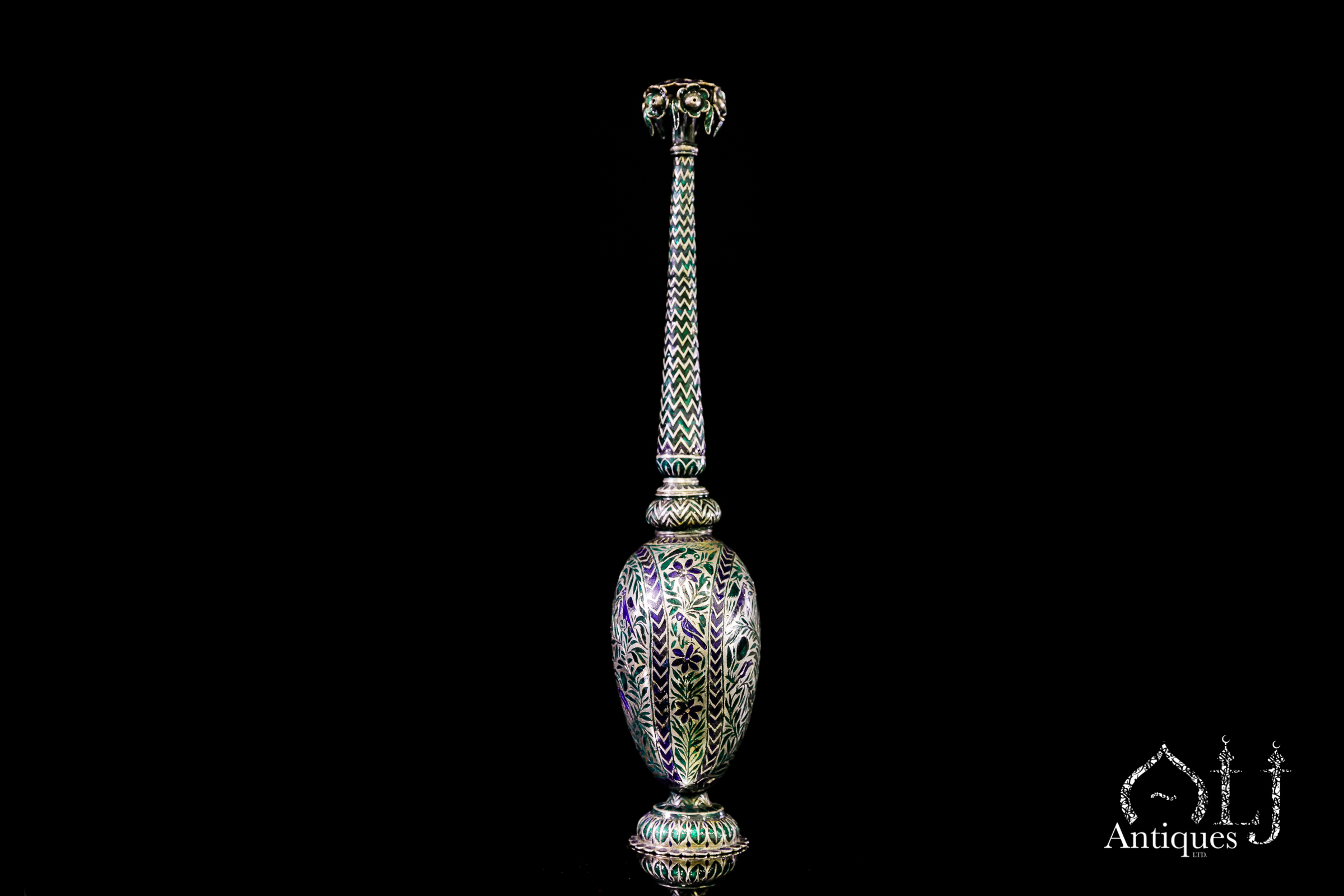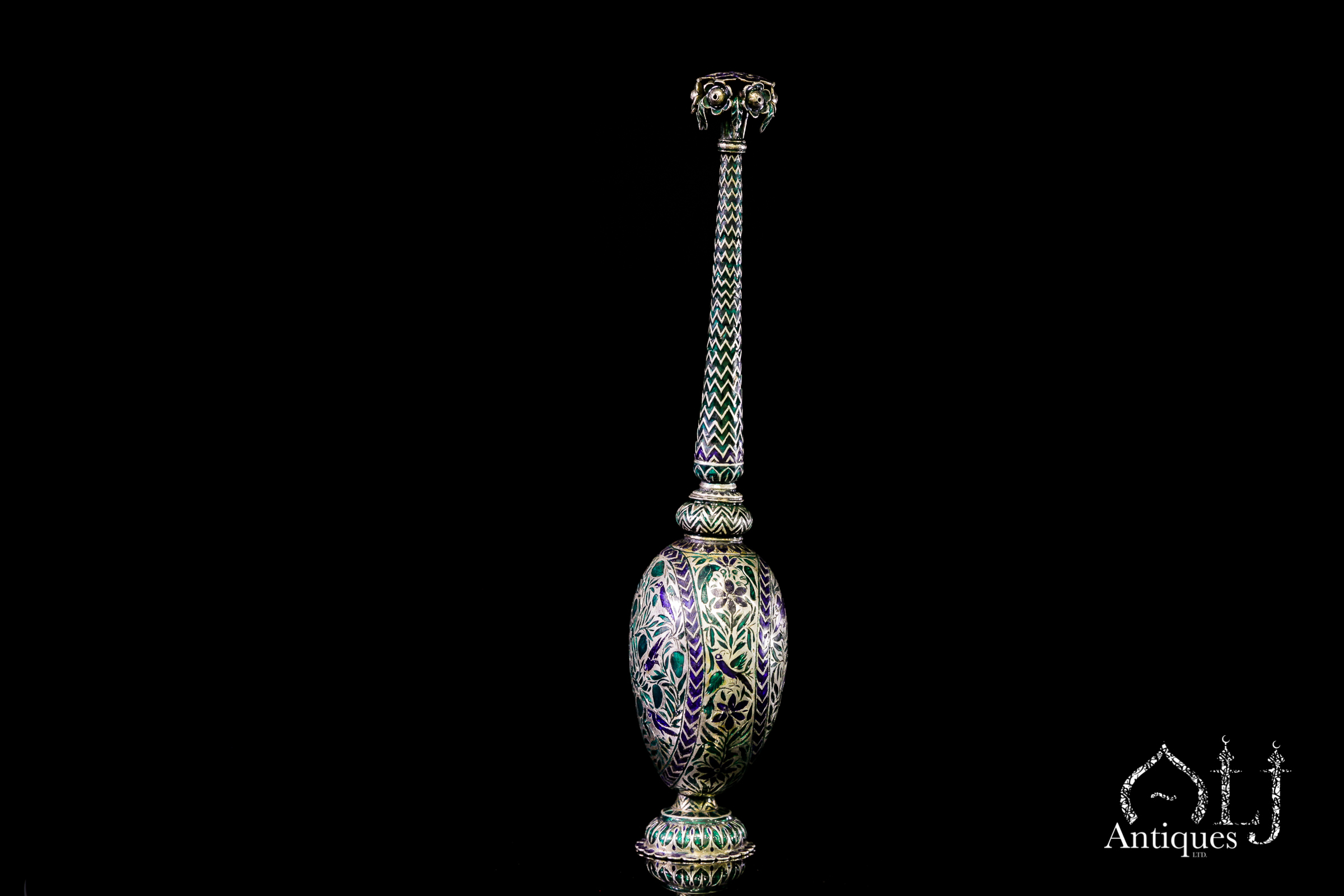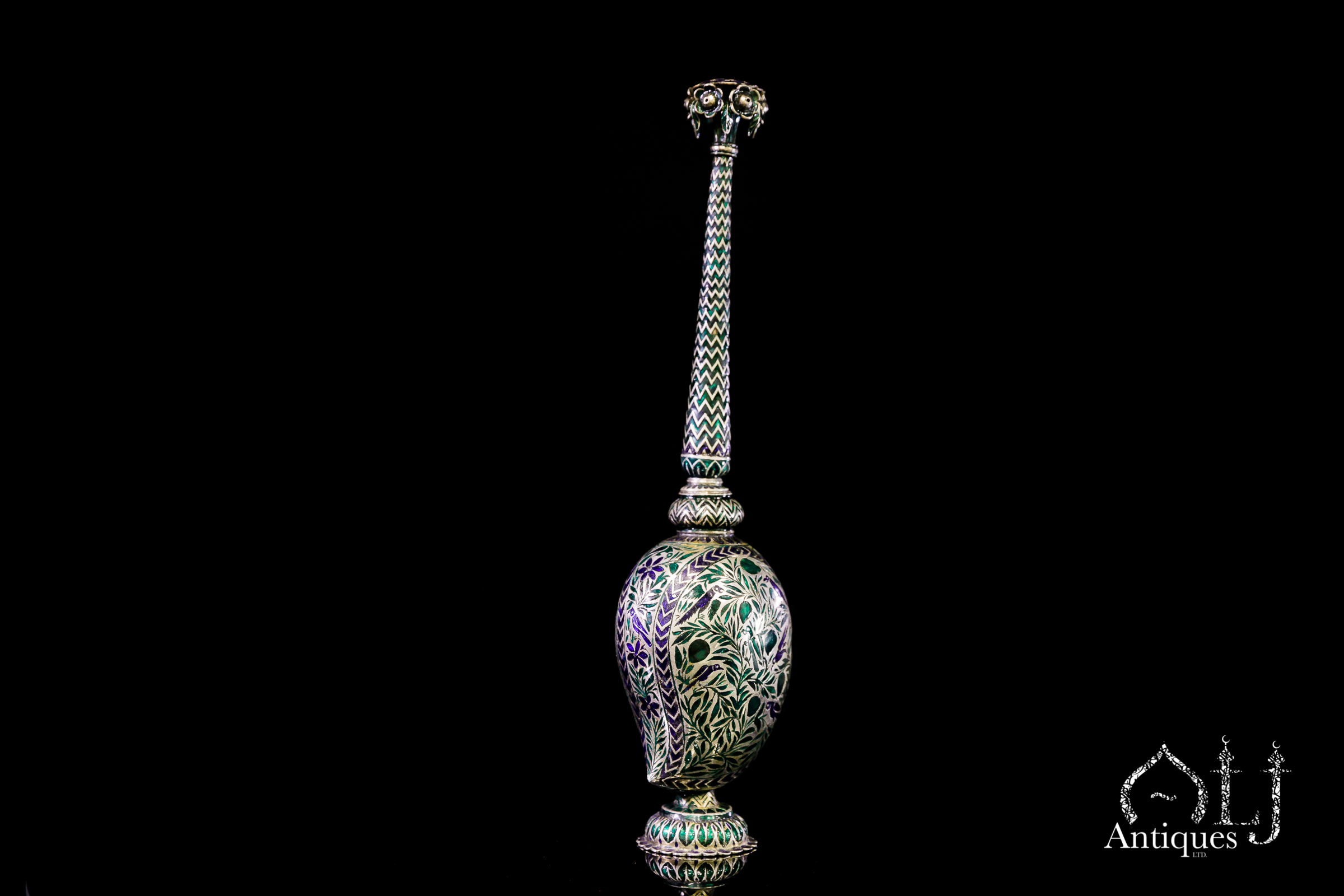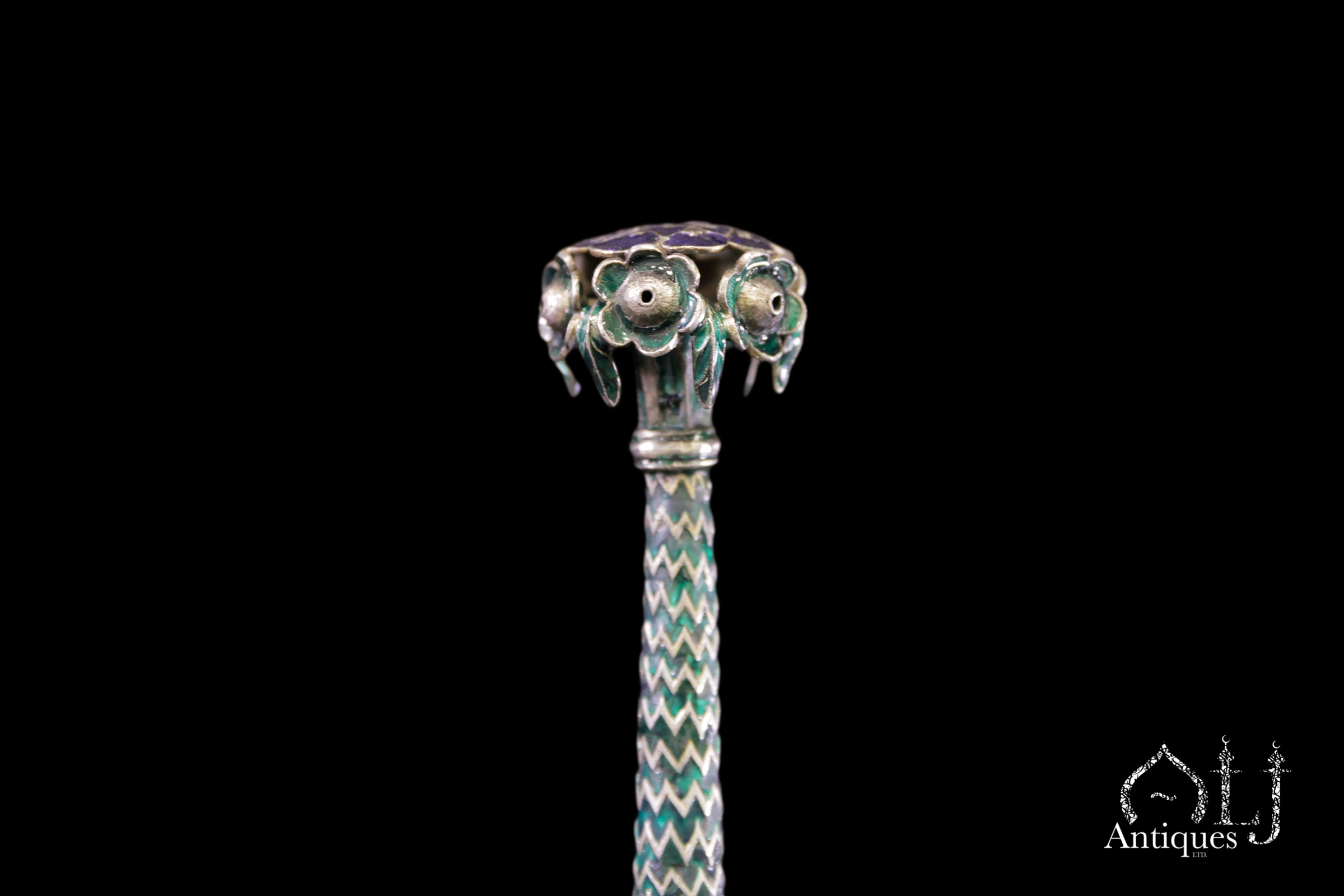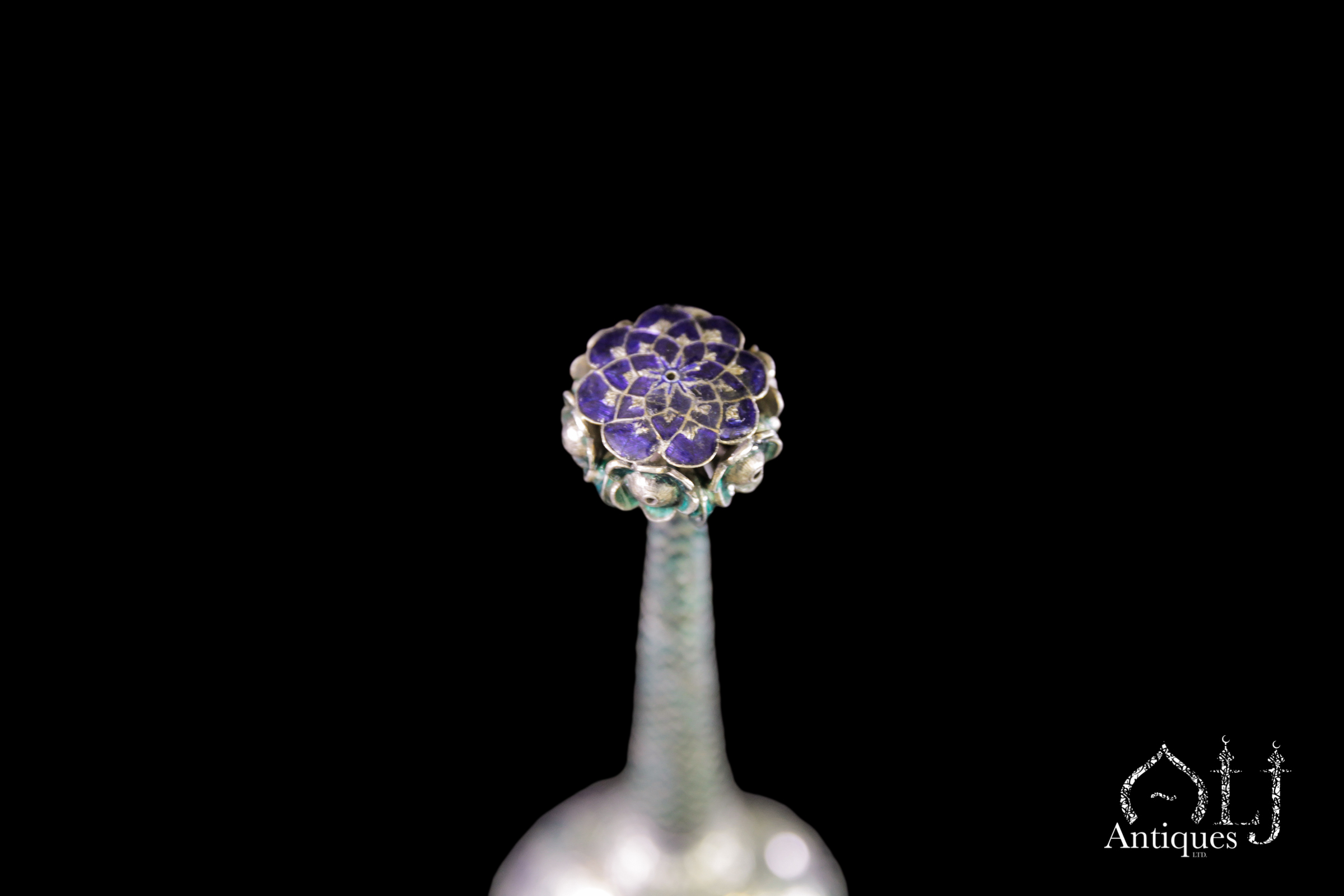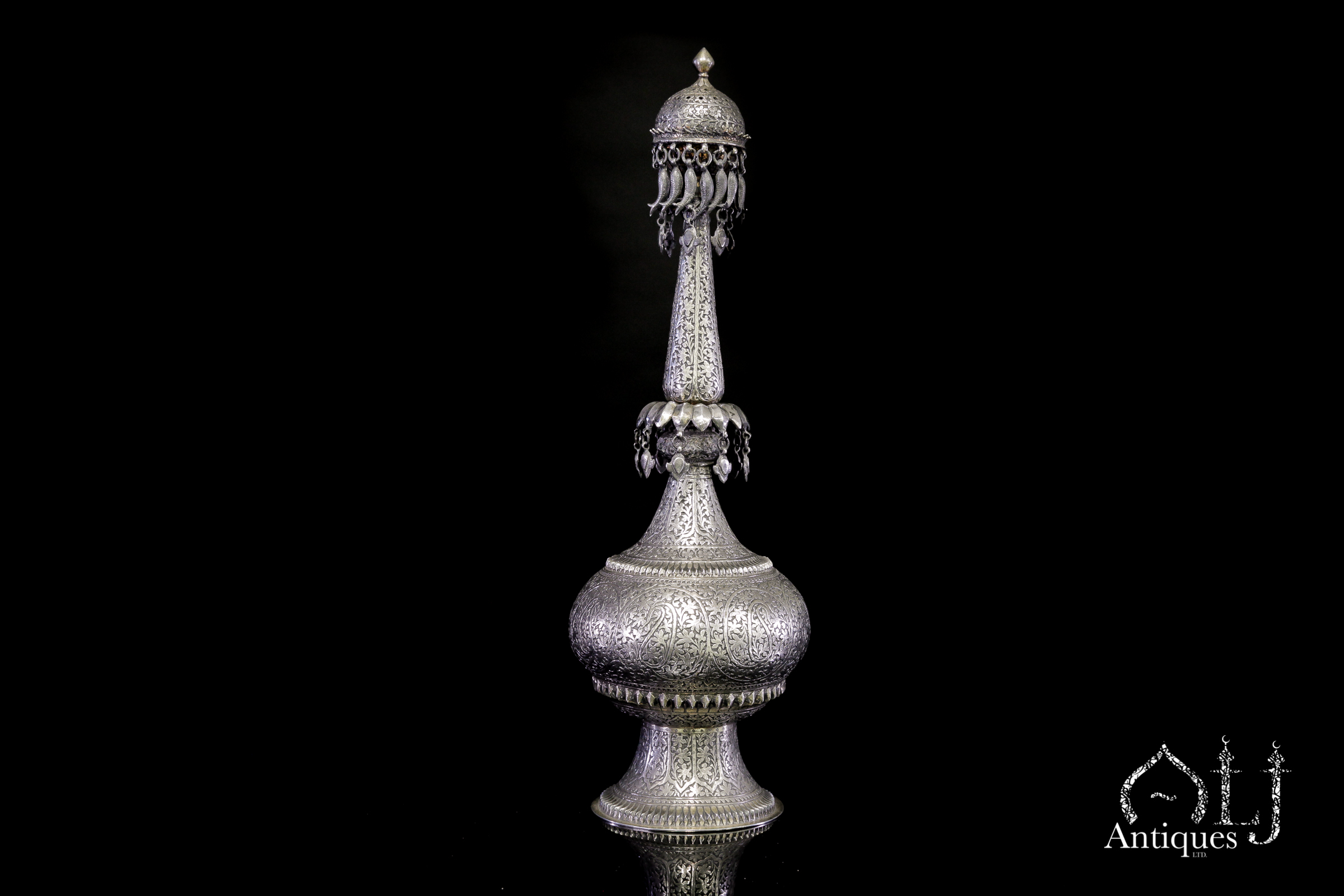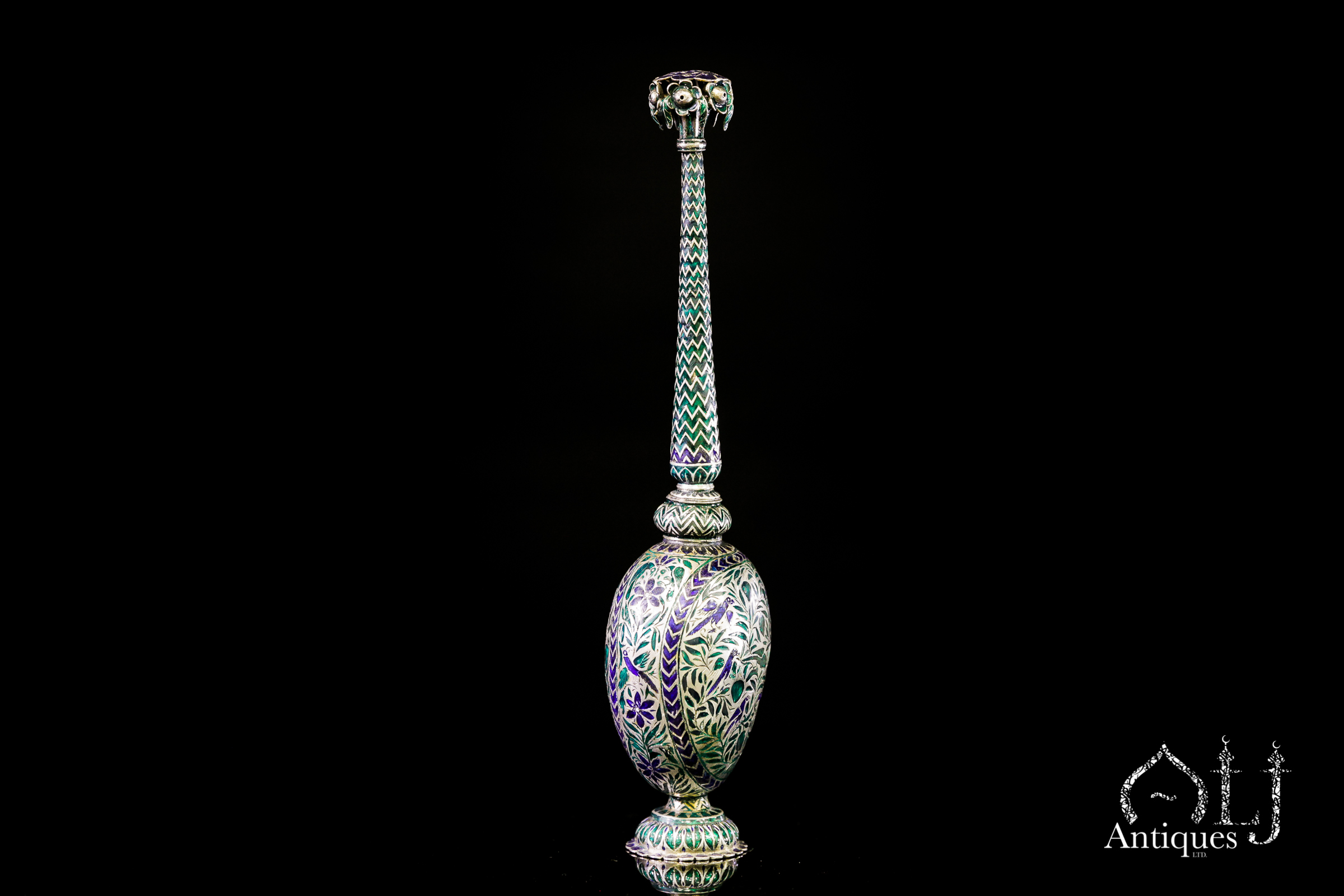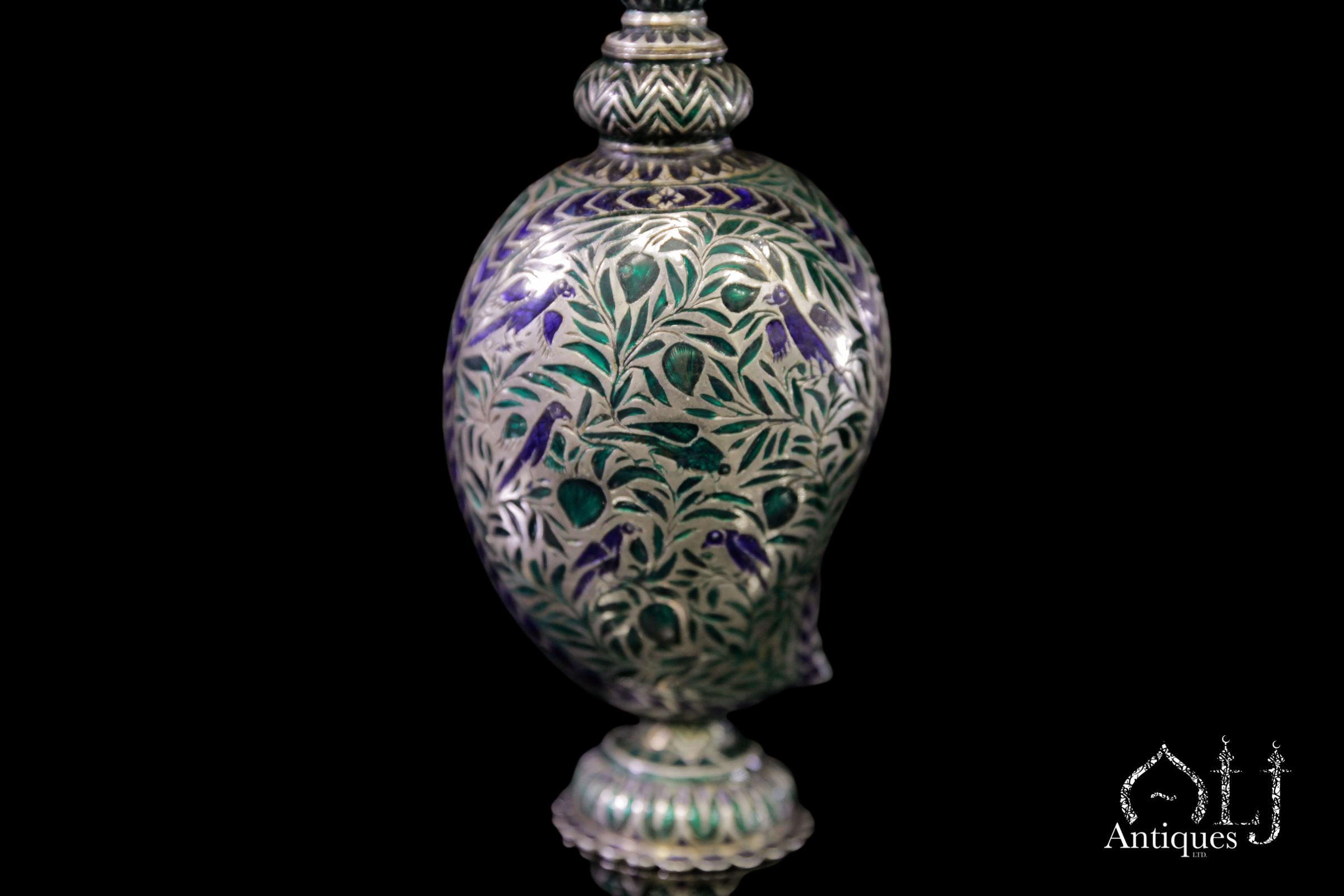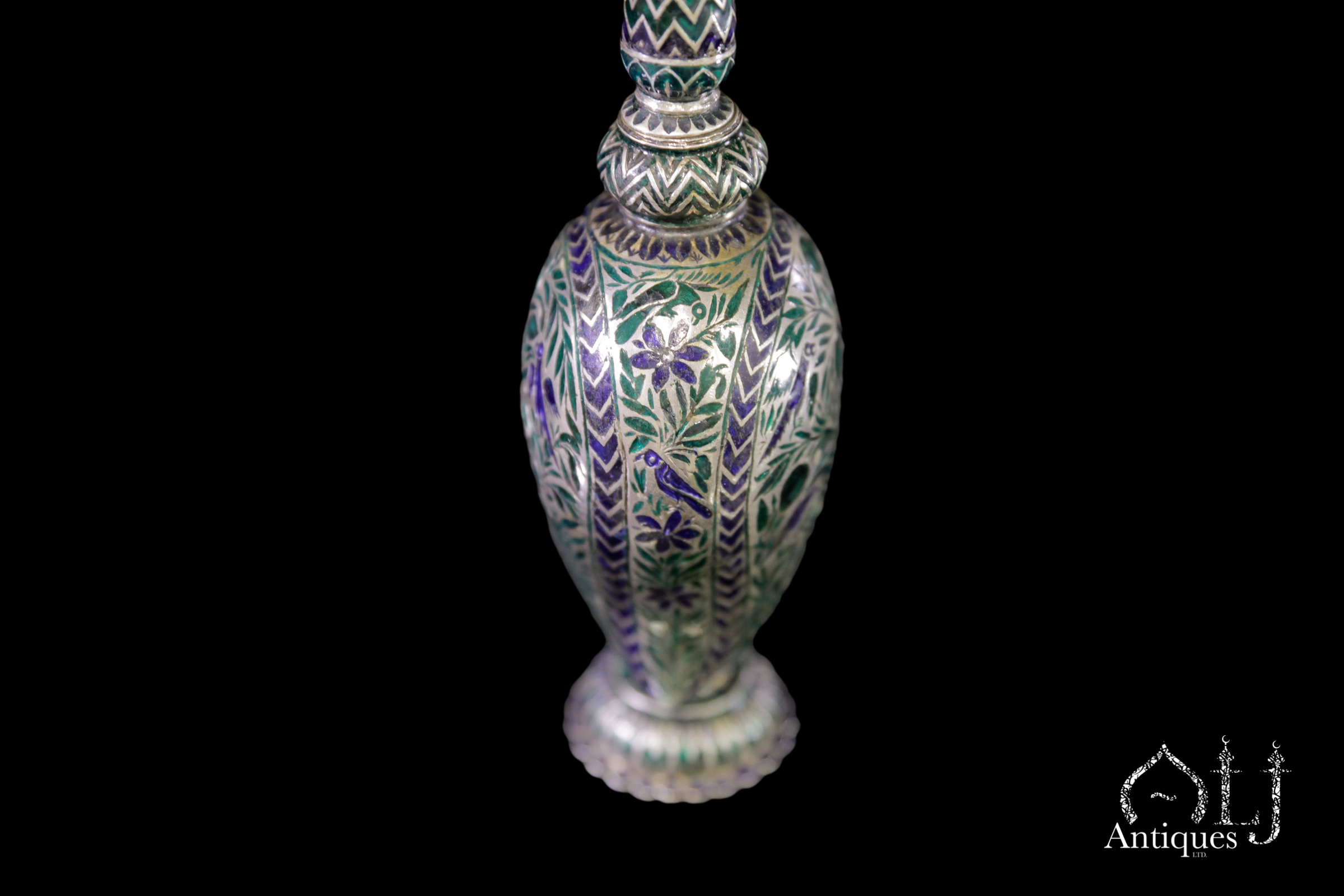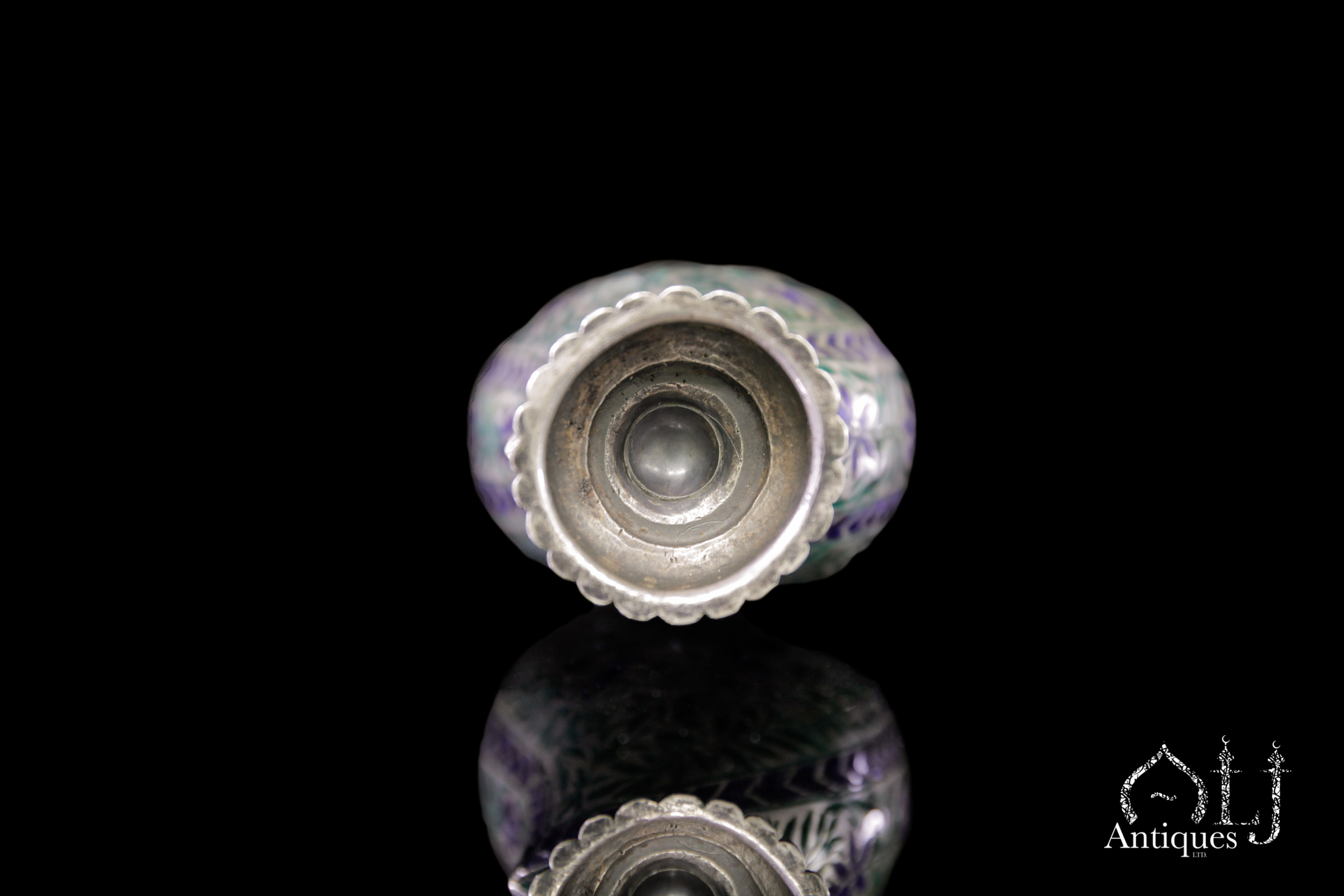Description
Rosewater Sprinklers are originally Persian utensils, and been widely used and known in India as gulabpash or gulabdani.
Sprinklers were widely used in the festivities and ceremonies at the Moghul court, where courtiers would pour rose water, jujube or orange blossom scent to each other in joyful ceremonies.
Sprinklers gradually became an established hospitality custom in India and used as a hospitality gesture to welcoming guests and in banquets, also as a symbol of honor carried to our present days, where it is often used in gatherings and weddings.
Elaborate silver sprinklers similar to our present lot were widely used in the Nawabi capital at Lucknow, which was the richest court of India during the 18th and 19th century.
Lucknow was a capital that was boosting with traders and dignitaries from other parts of India even with other faiths such as Hindus etc. also from other parts of the world such as the Persians, Armenians and Frenchmen etc.
The richness of cultural mixture in Lucknow had resulted in the creation of unique artistic pieces such as our current unusual example that balances the imaginative compositions with talented craftsmanship.
Our current lot is constructed with two main parts, the base and fluid container, which is made in the shape of a mango fruit and the long neck with the flower shaped top, the lower part of the sprinkler’s neck is made as threaded bolt to be fitted and screwed into the invisible threaded coupling nut at the top of container.
The use of distinctive palette of both vivid translucent blue and green champlevé enamel, and the design of birds, irises and other flowers, are typical of the work of Lucknow enamellers in the 18th century.
The most relevant characteristic of this example is the mango shaped body, a favored shape by various artisans and silversmiths for flasks and containers in various media throughout north Indian and during the Mughal period and in particular attested in the Deccani crafts such as the Bidri metal work.
A sprinkler with a mango shape body is rarely seen in well-known and recognized world collections and the Art market in general.
The bulbous part of the sprinkler is decorated with tendrils and vegetal motifs of blue and green enamel.
The ovalised shape foot is decorated with a pattern that reminds of the Greek “egg and dart” motif.
The slender tapering neck of this fine piece is decorated with chevron patterns of green enamel all along, finally rising to a globular moulding below a terminating in a stylized pierced floral finial allowing the liquid to come out once the sprinkler is turned upside down.
Condition: Very good, wear and tear, loss of gilding, some later date enamelling repair.
Dimensions:
36 cm height
13.5 cm width
For other Mango Shaped Containers please see:
– Gold, Silver & Bronze: from Mughal India, By Mark Zebrowski, London: Alexandria Press in association with Laurence King, 1997, Please see Mango-shaped bidri huqqa bases and containers lot Nos 409, 410 & 411 catalogued on pages 240-241.
– Sotheby’s London, 6th April, 2011, The Stuart Cary Welsh Collection, please see the sold mango shaped silver container and the Bidriware mango shaped Huqqa Base Lot Nos. 121, 123, pages, 122 & 123.
– Christie’s South Kensington, And Later Arts Of India, 1 October 2012, Lot 180: A Gem-Set Rock Crystal Mango-Shaped Flask.
– Christie’s London, Art of the Islamic And Indian World, 23 October 2007, Lot 361: An Indian Carved Gourd Flask Probably North India
–
– Christie’s South Kensington, Indian & Islamic Works of Art, 26 October 2007, Lot 439: A Mango-Shaped Lime-Paste Container
For similar enamelled sprinklers from Lucknow see:
The Victoria & Albert Museum, Rosewater sprinkler ca. 1850, Accession No. 130-1852.

